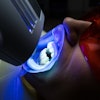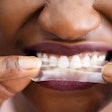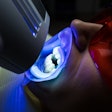Children born with cleft lip, cleft palate, and other craniofacial disorders face numerous medical challenges beyond appearance.
Patients can face serious airway, feeding, speech, and hearing problems, as well as social and psychological challenges, Laura Swibel Rosenthal, MD, of Loyola University Medical Center and colleagues write in the current issue of Otolaryngologic Clinics of North America.
"The management of patients with craniofacial syndromes is complex," Rosenthal and her co-authors wrote. "Otolaryngologic evaluation is of paramount importance in providing adequate care for this patient population."
The first step in managing craniofacial patients is ensuring a safe airway, according to the study authors (OCNA, June 2012, Vol. 45:3, pp. 557-577). There's also a great potential for nasal obstruction and sleep apnea as well as developing upper airway problems such as sinusitis, laryngitis, and rhinitis.
Craniofacial patients typically require several corrective surgeries, performed in staged fashion, the researchers wrote. Surgeons and anesthesiologists should be aware of the potential challenges these patients may have with general anesthesia.
The authors recommend a multidisciplinary approach, beginning with genetic counseling, to determine the cause of the malformation, to inform parents about what to expect, and to learn about the implications for other family members.
In addition to otolaryngologists, other specialists who typically care for craniofacial patients include pulmonologists, gastroenterologists, dentists and orthodontists. Depending on the congenital condition, a patient also may see pediatric specialists, such as cardiologists, ophthalmologists, neurosurgeons, endocrinologists, urologists, nephrologists and orthopedic surgeons.
Most patients also need additional support services, including case management (social work), psychology or psychiatry, speech pathology, physical therapy, occupational therapy, and other educational services, the researchers noted.
About 1 in 600 babies in the U.S. is born with a cleft lip and/or cleft palate, according to the Cleft Palate Foundation.



















